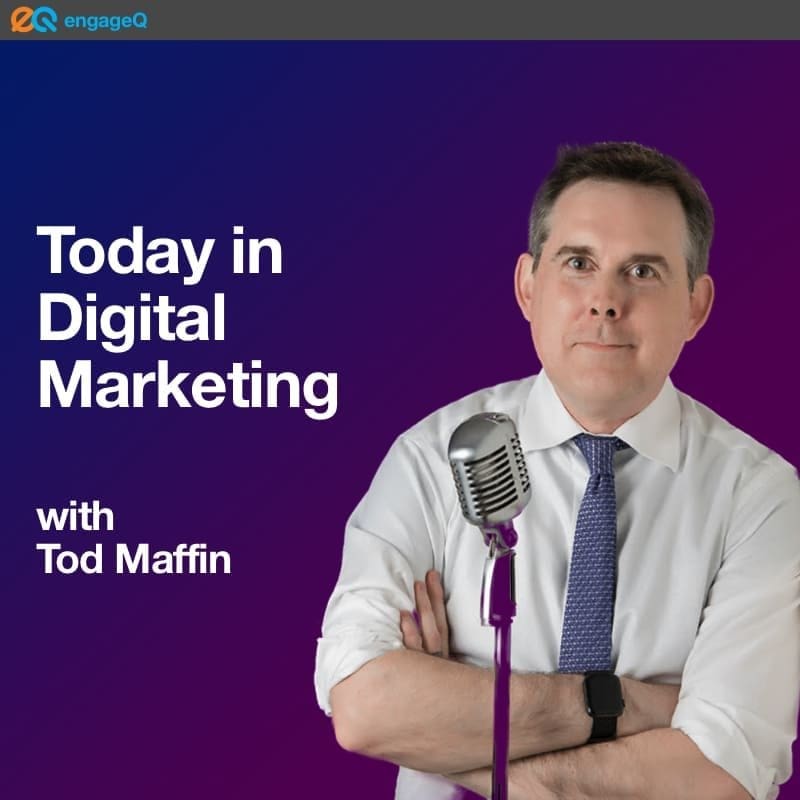So, your brand has done something stupid. You tweeted something racy from your brand's account or announced proudly that interns will no longer be paid.
Now your customers are getting mad.
Too bad your logo wasn't a drawing of a cute kitten because apparently, that would have helped.
Felix Septianto is a senior lecturer in marketing at the University of Queensland. He and his colleagues recently published a paper called “Too cute to be bad?”
Recently, our podcast host Tod Maffin spoke with him.
Table of Contents
- Instilling a Nurturing Feeling
- The Drug Company Test
- But How Strong is This Connection in the “Real World”?
- Some Brands Will Never Shake the “Evil”
- Whimsicality vs Kindchenschema
- The Internet Rule of Babies and Puppies
- Men vs Women
- Can an Ugly Logo Hurt a Brand Under Fire?
- Changing Your Logo Mid-Crisis
- How Long Does the Cute Factor Last?
Instilling a Nurturing Feeling
Tod Maffin: Really, that's all it takes?
Felix: Yes. Well, I guess the interesting bit from our research is we tried to understand why cuteness can actually be beneficial. I think that's the new thing because obviously, we know that when we see something cute like kittens, puppies, we love them, we want to protect them. That's been established in the prior research, basically, but what we tried to understand a bit more is why we do that. That's why essentially what we found is when we say something cute, we think that they are still growing and learning. That's why we want to protect them.
Tod Maffin: Oh, I see. It instills a feeling of nurturing in consumers.
Felix: Yes, but I think it's beyond when you mentioned the word feeling. Most research, they show that yes, when we see something cute, we want to protect because we want to nurture them. It's like feelings, but what we want to show as well, it's more than just feeling, there's also cognitive aspect. That's why we perceive them as still growing. They still have a chance, they're still learning, they're still changing, and that's why we want to protect them. I guess this is additional cognitive aspect that has not been explored before.
The Drug Company Test
Tod Maffin: Can you walk us through how you tested this? I thought it was really interesting. One of the experiments used a fictional pharmaceutical company.
Felix: Essentially, we basically create different– obviously, we developed, based on prior research, different transgressions. One of them, the one that you mentioned, is basically how pharmaceutical company, they increase the price of drugs by 300%. Obviously, normally people will see them as basically transgressed because obviously, you shouldn't do that, ethically speaking. If the logo of the brand is cute, they are less likely to punish the brand because they see like, “Oh, the brand is still growing. It's still learning. We should give them another chance.”
Tod Maffin: What does a cute pharmaceutical logo look like?
Felix: We used different animals. Basically, we used a cute birds as compared to realistic one. That's what we compare, really. Basically, the non-cute one is the realistic one, whereas we use cute bear, cute cats, and then cute birds, essentially, as the logo.
Tod Maffin: It's the two different drawings, essentially. One was photorealistic. It looked like someone had painstakingly done a very beautiful, detailed drawing, and then the other was almost stick figuration in complexity.
Felix: Yes. One is more simple and then I think the other one looked like less mature because detailed drawing of a bird, it's like a realistic drawing of a bird whereas the other one is like– it's more like baby. They have baby features, a simple and big eyes and all those features, I guess.
But How Strong is This Connection in the “Real World”?
Tod Maffin: The experimentation that you did was hypothetical. It was done– I think in your word, you call it in the lab. It wasn't with real companies, real organizations. How strong do you think this effect is that you found? Do you think it is so strong that it is applicable out in the “real world”?
Felix: Yes. That is a very good question. On the one hand, I think it's a common criticism when we talk about experimental design in the lab or online experiments because we did use hypothetical scenarios, hypothetical brands and logos. I think the idea of experiments, we want to establish causal evidence. By establishing causal evidence, we can show that it is really the effect of cuteness and not other effects that drive people to less likely to punish the brand. That's one.
The second one, the important thing, I guess, as well, is we want to establish why people want to protect the brand, why this cuteness effect emerged, essentially. What we found is because people, they want to protect the brand because they see the brand as growing or learning. From this understanding, I guess, let's say if we talk about brands with established association or established image, essentially, this effect might be less likely to emerge because people would have a strong association, whatever it is. Maybe for newer brands when people don't actually have new association and all those things, it might work better. That's one.
Secondly as well, knowing that the reason people want to protect the brand is because they see the brand as growing and learning, we can actually utilize this underlying reason, which means that in marketing communications, in campaigns, we need to highlight that we are still learning. We as a brand, we are still learning. We're still in this process of growing. That's why we deserve a second chance. I guess the implication's not only in the context of the brand logo itself, but by knowing why it happens, we can actually utilize that across different, you can say, marketing contexts and marketing communication strategy and not only just purely about brand logo, essentially.
Some Brands Will Never Shake the “Evil”
Tod Maffin: I guess because part of the reason is if you're– correct me if I'm wrong, but I would imagine part of the reason of wanting to at this stage of the research at least, in avoiding real companies is that some of these companies, particularly the larger ones, have a negative bias built in. I think in your paper, the example you used was Walmart, where something like 20% of people just don't like Walmart and believe it's a bad company, if for no other reason than they believe it's evil. The company hasn't done anything wrong in particular. They just have this general feeling that it's evil.
Felix: Yes, you are completely right. I guess because of that, we want to isolate it to make sure that that doesn't actually interfere with what we want to test. I do understand, even though on one hand that shows the effects is real, on the other hand, it is difficult to know whether in real-world situation it will be strongly applicable. That's what I mean. The idea is by knowing why it happens, we can also utilize that across different contexts.
Whimsicality vs Kindchenschema
Tod Maffin: In your paper, you mentioned that the academic world tends to group cuteness into two dimensions. One is whimsicality and the second, I can't even pronounce. Can you pronounce it for me and explain the difference between the two?
Felix: Okay, let me try. I'm not sure I can pronounce correctly. It's kindchenschema. It's essentially baby cuteness. That's, I guess, the default when we see something cute from babies. That's what we are looking at here, whereas the other one is more in the context of marketing. It's something cute which is playful. That's why we call it whimsical.
Let's say spoon, but we make a shape of animals. We put eyes like humans, all those kinds of things. That's like make it playful and whimsical, whereas the other one that we see, which is the default or you can say the conventional term of cuteness is basically baby cuteness. That's what we're looking at here, essentially, how baby cuteness can have positive effects and can reduce consumer punishment.
The Internet Rule of Babies and Puppies
Tod Maffin: It's funny because one of the well-known secrets for content managers on social media is what they call sometimes the babies and puppies phenomenon, where just the presence of those images immediately juices engagement. You think it's mostly the fact that we have this nurturing feeling for the logos that compels people, but you also mentioned, I guess, there's a– we want to believe that they're still learning. Can you talk a bit more about that?
Felix: Yes. I think the idea of we want to nurture babies, essentially, or something cute, that's been established. What we're trying to looking at and based on prior research- and we see this in the context of education, when we think of children, they make mistakes. We run additional credence, essentially. We ask people when children make mistake, why we want to forgive them, essentially.
Most of them, they will basically say, “Well, it's because they're still growing. They're still learning. We should give them a chance.” That's the idea, say that it means that yes, cuteness can elicit instinct, if you may will. That's very basic in our processing, you can say, system. We want to protect them. More than that, if we think about it further, we can also select something cute, also signal that we are still in this process of growing. That's why somehow that means, shouldn't we deserve a chance to make things better in the future?
Tod Maffin: There are some risks though. Previous studies have found that the cuter the food packaging is, not necessarily the logo but the packaging, the fewer people think that the food is healthy.
Felix: Well, that is correct, but at the same time, I think the context that we are looking at is one, baby cuteness and baby cuteness. We are examining the context of consumer punishment. Because the instinct to protect the cuteness object of the cute object, it can be beneficial. Secondly, when you mention cute packaging, most of the cute packaging is not necessarily also baby cuteness.
They're going to moderation of the whimsical cuteness. That is true. That's like a separate literature showing that whimsical cuteness can lead to actually more consumption. They will see it as less healthy, but they will actually indulge more because like, “You know what? I want to just enjoy myself,” something like that. You are right. When you mentioned that at that point, we might also talk about a different type of cuteness that is in play.
Men vs Women
Tod Maffin: Did you find a difference between how men reacted versus how women reacted?
Felix: Not in our study. I do understand this, like a few studies, I would say, obviously, maybe in women it's stronger, the nurturing instinct. However, I guess there's a different reason, I guess. In our case, maybe the sample is not big enough, so we have big enough samples as to detect our effect, but it doesn't mean that we have large enough to really capture the whole nuances, especially when we talk about demographic factors. That's one.
The second one as well, I think that's also because we are not talking about human per se, we're talking about brand. I think in that instance, I guess gender is not really an important factor as compared to, let's say, maybe if we're talking about natural babies, essentially human babies, that might have an effect potentially, we don't know yet, but we talk about a brand. I think in this context, it's less likely of a fact an important factor.
Can an Ugly Logo Hurt a Brand Under Fire?
Tod Maffin: Is the opposite true? Could a particularly ugly or just a plain text logo work against a brand if it comes under fire?
Felix: Well, that's a difficult question to answer because ugly and cute, they are not really the opposite. Ugly is also how you define ugly. It's maybe just atypical, it's not common, but for some people, because it's not common, they call it ugly, even though is not really ugly. I think when we talk about cute, I think it's more objective. It's more universal when we see puppies, when we see cute animals, babies.
I think research also shows how this instinct, nurturing instinct, it's basically all, even from the animal kingdom, it's all like when we see cute things, even animal, we want to protect them. I think that makes it difference. When you mention ugly, there is a lot of features, aspects, and dimensions that we need to, I guess, discuss and discern before we say something is ugly.
Tod Maffin: I guess I probably chose the wrong words. I'm thinking something like even just decidedly not cute. I think of the logo of The Gap, for instance, which is just the word Gap. It's not ugly, but it's just plain text. I wonder if the fact that there is nothing cute about that at all, if it instills anything negative there.
Felix: Well, in our research, essentially what we show is something cute will reduce the negative effects of transgression, but I don't think we find that something non-cute will lead to increased punishment or increased negative effects because the baseline is when we talk about transgression, it is something negative, it will lead to something negative. It's just common sense, but how can we reduce those negative responses? I think the baseline here is already negative because we're talking about transgression, I guess, or a scandal, that's it.
Changing Your Logo Mid-Crisis
Tod Maffin: Did you study what happened if brands who were under fire changed their logo at the time of crisis to something cute as a mitigation factor?
Felix: No, because that's a bit tricky because in a real-world situation like during scandal and then an actual brand tried to change the logo, I don't think that– People will say, “Hang on. What they're trying to do?” I think in fact, you're actually proposing an interesting condition, which maybe at that time, cuteness can actually backfire because at that time when people will perceive like, “Hang on, what they're trying to do? They might try to make me feel bad by punishing them.”
But at that time, maybe they will think more. Then when they say something cute, they will be more punishing because of that. We don't test that, but you're actually proposing very interesting point, in which people actually be more punishing toward cute brands if people perceive it as just marketing strategy.
How Long Does the Cute Factor Last?
Tod Maffin: Yes, I would think so. I would think that people would be very cynical or something like this. How long does this effect last? Well, just to put it bluntly, how many stupid things can a brand do before this cuteness forgiveness wears off?
Felix: Well, we cannot really quantify because we don't actually test that. However, in one of the study, we just basically show when people receive information that like this is not the first time that they deal with the problem, it has happened before, the cuteness effect disappear. Again, we don't really claim that at this point, the cuteness actually backfire, but once when people perceive and when people receive information that this is not the first time that they have done something bad, essentially, or this transgression or scandal, whatever it is, the cuteness effect disappear.
Tod Maffin: You get one shot at it?
Felix: Yes. I think from our initial study, I guess that's what we found.














